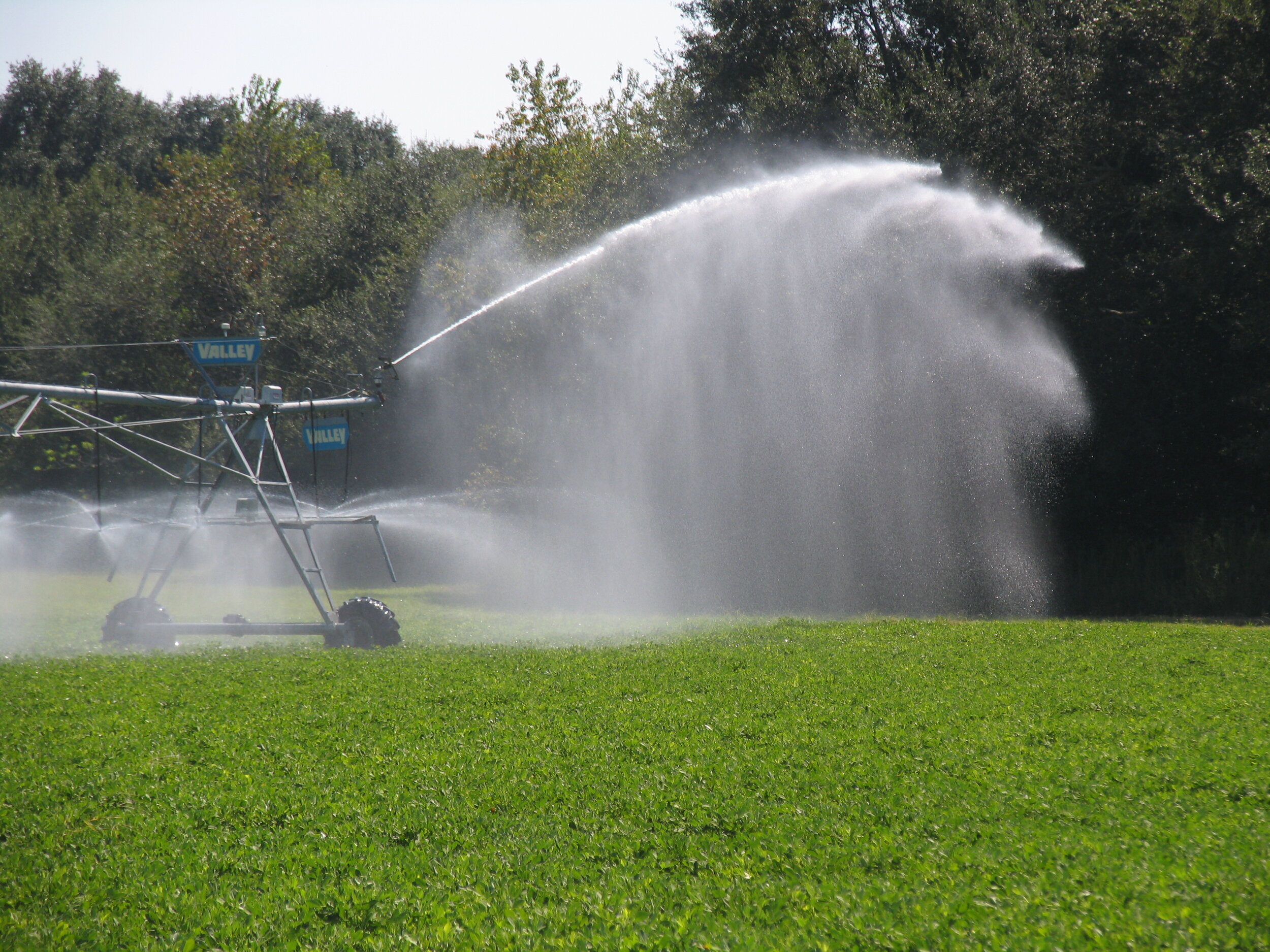WHAT ARE END GUN CONTROLS?
Controls to optimize END Gun irrigation uniformity and efficiency
The end gun is a large sprinkler located on the end of center pivot irrigation systems that can extend irrigation from 80 to 100 feet on average.
Proper end gun irrigation application can optimize plant growth, crop yield, crop quality, nutrient management, root zone health, and irrigation decisions.
End Gun Controls
Proper end gun irrigation offers a low cost way for farmers to easily irrigate additional acreage that doesn’t fall under center pivot sprinklers. When set correctly, end gun sprinklers offer slow, steady and uniform irrigation. When end gun applications are not properly set, it will result in wasted irrigation water and pumping costs.
Center pivot system and end gun in a peanut field. (Calvin Perry)
Incorrect end gun application can typically be an easy fix. Setting the end gun at proper angels, ensuring uniform application, and setting the springs in the flapper to manage speed are all critical in optimizing end gun efficiency.
Uniformity tests, which are conducted by setting up buckets every 10 to 20 feet outside of the end of the pivot, are a simple and cost effective measure of uniformity.
Pivot and field specific considerations should also be taken into effect when determining proper end gun settings. If adjusting settings doesn’t result in improved end gun efficiency, ensure you have the correct end gun installed for the system and that the nozzle is not worn.
End Gun Shut Off
End gun spraying into roadway. (Calvin Perry)
While often end gun sprinklers are used to extend irrigated areas beyond the center pivot, in some cases end gun sprinklers may irrigate areas that do not require irrigation. This includes areas such as wooded areas, roadways, in field wetlands or other non-cropped areas.
End gun shutoff controls allow growers to identify areas along the circumference of the center pivot system that do not require irrigation. Shutting off end gun irrigation saves water, pumping costs, and reduces farmer liability by ensuring non-cropped areas are not under an end gun spray.
estimated cost
A screenshot of End Gun shutoff acreage. (Tony Black)
Uniformity tests are a low-cost way to determine if end gun settings need adjustment. Reach out to your local county extension agent or soil and water conservation district for free uniformity test options. Specific fixes to end gun controls range from free settings adjustments to nozzle replacements.
End gun shutoff retrofits for pivots that do not have existing shut-off controls cost an estimated $2,500.
efficiency
Water savings from pivot end gun controls are specific to the individual field, crop, and surroundings.
End gun shut off technologies may save a significant amount of water, depending on crop and acreage in the shut off area. Approximately 216,000 gallons per acre are saved in peanut fields, 345,000 gallons per acre in corn fields, and 371,000 gallons per acre in cotton fields (estimates based on UGA Extension data presented by Tony Black). Shut off area is specific to each individual field conditions and surrounding areas.



